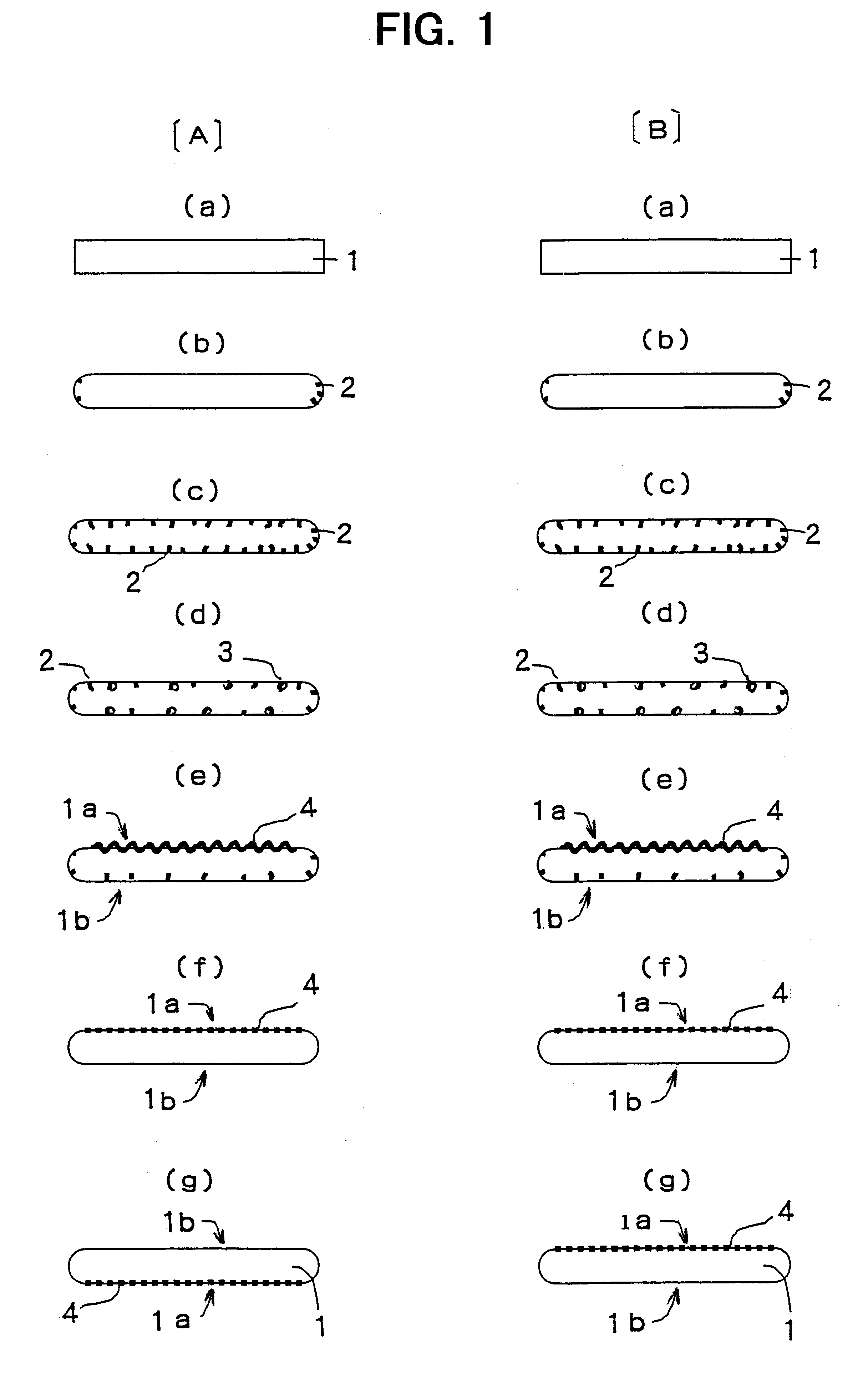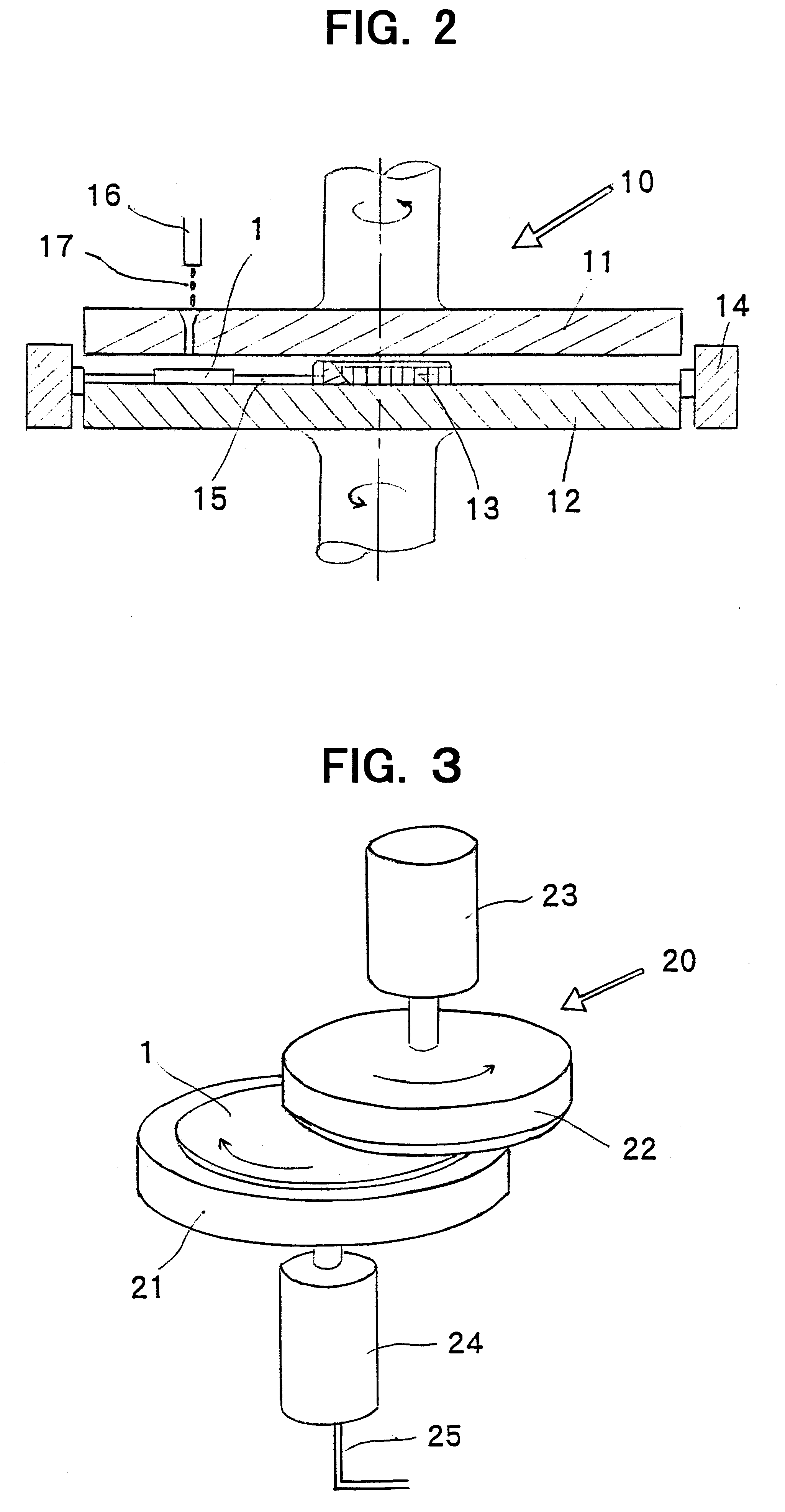Semiconductor wafer and method for fabrication thereof
a technology of semiconductor and silicon wafer, which is applied in the manufacturing of semiconductor/solid-state devices, basic electric elements, electric devices, etc., can solve the problems of reducing the flatness of the wafer, affecting the chucking and releasing of the wafer, and affecting the chucking effect of the wafer
- Summary
- Abstract
- Description
- Claims
- Application Information
AI Technical Summary
Benefits of technology
Problems solved by technology
Method used
Image
Examples
example
Semiconductor wafers were fabricated from a semiconductor ingot according to the method shown in FIG. 1 [A] (a) to (g). 200 of them were determined as for their quality.
The apparatuses described above, namely, a double side lapping apparatus, a single side grinding apparatus, a double side polishing apparatus, a single side finishing mirror-polishing apparatus or the like were mainly used.
The wafers having a diameter of 300 mm and a thickness of 975 .mu.m were obtained as a starting material by a slicing step, and subjected to lapping, grinding, polishing and the like.
The steps of lapping, grinding and polishing were conducted as follows with varying conditions therefor.
The double side lapping step was conducted varying a stock removal in the range from 80 to 200 .mu.m as a value of those of both surfaces put together.
The etching step was conducted using an alkali solution or acid solution with a sufficient stock removal to remove a mechanical damage layer formed during lapping.
The ...
PUM
 Login to View More
Login to View More Abstract
Description
Claims
Application Information
 Login to View More
Login to View More - R&D
- Intellectual Property
- Life Sciences
- Materials
- Tech Scout
- Unparalleled Data Quality
- Higher Quality Content
- 60% Fewer Hallucinations
Browse by: Latest US Patents, China's latest patents, Technical Efficacy Thesaurus, Application Domain, Technology Topic, Popular Technical Reports.
© 2025 PatSnap. All rights reserved.Legal|Privacy policy|Modern Slavery Act Transparency Statement|Sitemap|About US| Contact US: help@patsnap.com



